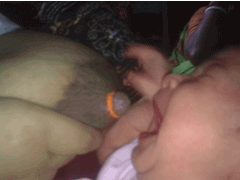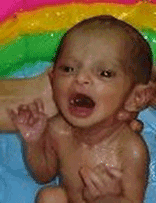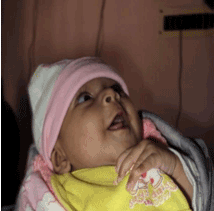Make the best use of Scientific Research and information from our 700+ peer reviewed, Open Access Journals that operates with the help of 50,000+ Editorial Board Members and esteemed reviewers and 1000+ Scientific associations in Medical, Clinical, Pharmaceutical, Engineering, Technology and Management Fields.
Meet Inspiring Speakers and Experts at our 3000+ Global Conferenceseries Events with over 600+ Conferences, 1200+ Symposiums and 1200+ Workshops on Medical, Pharma, Engineering, Science, Technology and Business
Commentary Open Access
Diary of Deboleena-The Mother
| Chakrabarti Kamalendu* | |
| Pediatrician, WBHS, National Trainer, Breastfeeding and Infant Feeding, West Bengal, India | |
| Corresponding Author : | Chakrabarti Kamalendu Pediatrician, WBHS, National Trainer Breastfeeding and Infant Feeding West Bengal, India Tel: 9163050202 E-mail: drkamalendu@gmail.com |
| Received May 31, 2014; Accepted September 25, 2014; Published September 27, 2014 | |
| Citation: Kamalendu C (2014) Diary of Deboleena-The Mother. J Preg Child Health 1:112. doi: 10.4172/2376-127X.1000112 | |
| Copyright:2014 Kamalendu C.This is an open-access article distributed under the terms of the Creative Commons Attribution License, which permits unrestricted use, distribution, and reproduction in any medium, provided the original author and source are credited. | |
Visit for more related articles at Journal of Pregnancy and Child Health
Abstract
This article is in fact a commentary of new mother who faced severe breastfeeding problem. The mother Deboleena had herself written the diary of her experience and her feelings and how she got relief after consulting the author. The author’s analysis is given here as comment by the author.
| Keywords |
| Deboleena; Breastfeeding counseling; Breastfeedingpositioning; Flat nipples; Rubber band |
| Patient’s journeys |
| September 24, 2010: I am back to my sweet home with my one day old baby from the hospital after a normal delivery. But I am not fully happy as the baby is not suckling properly. On my insistence, the pediatrician has examined her. ‘Her suckling power is fine’, she assures me. |
| On the way back home, I have visited another pediatrician known to us, and she, after identifying a problem with my nipple, has unequivocally suggested feeding baby-food immediately. I am in a fix. |
| My husband presented me Shisur Paricharja, a book on child care in Bengali for the parents, written by Dr. Kamalendu Chakrabarti a few months ago, which he had heard about from his friend, Dr. Abhijit Nandi. Both of us read the book thoroughly and decided to feed our baby exclusively on breast milk for the first six months. We hardly imagined then what was in store for us [1]. |
| It is a very humid evening; Tista, my little princess, is crying incessantly and I am unable to feed her. We have procured the baby food and my husband has asked Dr. Abhijit to visit us. Dr. Abhijit comes and after talking to Dr. Chakrabarti fixes up an appointment for the next morning. |
| My whole body is desperate for sound sleep but the night seems more difficult to pass through than the night when I was in labor. My one-day old baby is crying because she is hungry and as a mother I am unable to fulfill my duty. I am in tears and have never felt such helplessness in my whole life. |
| Sept 25, 2010. We are travelling almost 40 km in the early morning hours to meet Dr. Chakrabarti . My baby is exhausted by now and lying on my lap half-asleep, with increasingly faint intermittent cries. I am unable to check the spontaneous flow of tears from my eyes. |
| Dr. Chakrabarti has been writing something the whole night. He examines both of us and assures us ‘do not worry; the problem will be sorted out within next couple of hours.’ I am a bit apprehensive but more than that I am unimaginably astonished to see that Dr. chakrabarti is sitting on a floor-mattress with a very ordinary casual dress. With a caring smile, he welcomes us to sit on the same. He lovingly says that “This is way I consult with all. Formalities of office, furniture etc. makes a strong barrier. So be comfortable”. |
| His lady attendant by this time serves us tea and snacks. Later I come to know that he does it for all. All these bring slight self-confidence in me. |
| Then he quickly makes us understand, what he is going to do and within no time he puts a rubber band around the base of my nipples with the help of a syringe and asks me to put Tista to breast (Figure 1). |
| It turns out to be a miracle. A small rubber band and part of a 10 ml syringe has done the entire trick. The baby can latch and has started suckling immediately! |
| We stay there for another couple of hours. After completion of feed satisfactorily first time in her life, Tista is now sleeping on my lap. Dr. Chakrabarti gives us some important information’s of general baby care and feeding. |
| It is the time to return home. Tista is sleeping. Have I seen a small smile on her lips? (Figure 2-4). |
| I will always tell Tista about this incident; I will tell her that because of Dr. Chakrabarti, she has been saved from taking baby food. |
| My comments |
| Deboleena, the mother was well-educated and had a clear idea of the benefits of breastfeeding and disadvantages of artificial feeding. The father was very supportive and enthusiastic about breastfeeding. However, the health care system did not give enough attention to the problems encountered by the mother and the baby. |
| The attending neonatologist examined the sucking power of the baby by simply putting her finger inside the mouth, and assured the mother that the baby’s sucking power is good, so she should continue breastfeeding. This method of testing sucking power is not very helpful, because every baby will try to suck anything and everything put to the mouth, especially when hungry. |
| The second pediatrician examined the breasts and nipples, and straightway decided that there was problem in the nipples and breastfeeding was not possible. He followed the easiest path of giving artificial feeding. From this one can infer that, for him, the difference between effects of breastfeeding and formula feeding was of no importance. His advice also ignored the feeling of the parents. When I saw Tista, she was 3 days old and she looked just like a skeleton wrapped in loose, thin skin. She was having little movements of her body and a vacant look. She was too weak to cry. Her extremities were cold, pulse was rapid and thready, and heart beats were weak and rapid. She had passed a few drops of concentrated urine twice during last 12 hours. |
| The condition of Deboleena was miserable. She was well built and well nourished. But she was totally exhausted and tense. Her confidence was completely shattered and she was unable to continue the conversation. |
| Deboleena’s husband appeared steady but his body language was also very apprehensive. |
| After a quick assessment of the situation, I tried to counsel Deboleena and build her confidence by praising her for persisting in trying to breastfeed against such odds. As a part of giving practical help, I offered her some snacks and a cup of tea. |
| I observed the condition of her breasts and nipples and immediately came to know that the problem lay in Deboleena’s moderately large breasts with completely flat nipples. |
| Moderately large or large breast mass sometimes causes difficulty in positioning the baby at breast. It needs patience, time and cooperation of the mother. |
| After making the mother understand the nature of the problem, and what I was going to do, I applied my own invention of application of rubber band with the help of a syringe-applicator [1] and asked the mother to put her baby in proper position. The baby was put to breast with rubber band attached at the base of the nipple. With proper positioning the baby started suckling vigorously at the breast as if she were starved throughout his life. |
| There were smile in the face of the mother. After about 15 minutes, Tista finished her feeding, and fully satisfied, went to sleep. |
| I kept the parents for another 3 hours or so, till Deboleena felt confident enough to feed her baby. With a heavenly smile, she, her husband and baby left for home. |
| Four actions were very essential after delivery, especially when the mother pointed out that she was facing difficulty to breastfed. These were: (a) proper counseling, (b) proper positioning of the baby during feeding, (c) a careful examination of the breasts and nipples and (d) the possible illness of the baby including mouth (oral thrush etc.) Neither the mother nor the baby needed any medicine. |
| Patient consent form |
| For a patient’s consent to publication of information about them in the BMJ and in associated BMJ Publishing Group Ltd (“BMJ Group”)publications and products. Please note that this form is also available in multiple languages. |
| Name of person described in article or shown in photograph: |
| TISTA__SAHA_______________________ |
| Subject matter of photograph or article: ___ GENERAL _ CONDITION ______________________ |
| BMJ manuscript number____I_______________ |
| Title of article:___ MANAGEMENT _OF FLAT NIPPLES WITH SIMPLE RUBBER BAND _________ |
| Corresponding author:___KAMALENDU |
| CHAKRABARTI_________________ |
| I__NirmalKantiSaha___________________________________ |
| [insert full name] give my consent for this information about MYSELF/MY CHILD OR WARD/MY RELATIVE [circle correct description] relating to the subject matter above (“the Information”) to appear in the BMJ and associated publications.* |
| I have seen and read the material to be submitted to the BMJ |
| I understand the following: |
| (1) The Information will be published without my name attached and the BMJ will make every attempt to ensure my anonymity. I understand, however, that complete anonymity cannot be guaranteed. |
| It is possible that somebody somewhere - perhaps, for example, somebody who looked after me if I was in hospital or a relative - may identify me. |
| 2) The text of the article will be edited for style, grammar, consistency, and length |
| (3) The Information may be published in the weekly print BMJ, which is distributed worldwide. The journal goes mainly to doctors but is seen by many non-doctors, including journalists. |
| 4) The Information will also be placed on the BMJ’s website, bmj. com, which is usually visited by 1.2 million users each month. |
| (5) *The Information may also be used in full or in part in other publications and products published by the BMJ Group or by other publishers to whom the BMJ Group licenses its content. This includes publication in English and in translation, in print, in electronic formats, and in any other formats that may be used by the BMJ Group or its licensees now and in the future. In particular the Information may appear in local editions of the BMJ or other journals and publications published overseas. |
| 6) The BMJ Group will not allow the Information to be used for advertising or packaging or to be used out of context (for example, a photograph will not be used to illustrate an article that is unrelated to the subject of the photograph.) |
| (7) I can revoke my consent at any time before publication, but once the Information has been committed to publication (“gone to press”) it will not be possible to revoke the consent |
| Signed:_ |
| NirmalKantiSaha_________________________________ |
References
- Chakrabarti K, Basu S (2011) Breastfeeding Medicine, 6(4): 215-219.
Figures at a glance
 |
 |
 |
 |
| Figure 1 | Figure 2 | Figure 3 | Figure 4 |
Post your comment
Relevant Topics
Recommended Journals
Article Tools
Article Usage
- Total views: 13657
- [From(publication date):
November-2014 - Aug 28, 2025] - Breakdown by view type
- HTML page views : 9107
- PDF downloads : 4550
